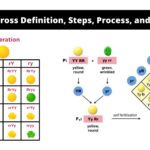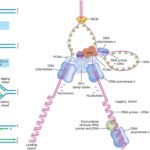IB Biology 27 Views 1 Answers
Sourav PanLv 9November 8, 2024
How do the contractions of circular and longitudinal muscles in the small intestine aid in digestion and movement of food?
How do the contractions of circular and longitudinal muscles in the small intestine aid in digestion and movement of food?
Please login to save the post
Please login to submit an answer.
Sourav PanLv 9May 15, 2025
The contractions of circular and longitudinal muscles in the small intestine play a crucial role in digestion and the movement of food through the digestive tract. Here’s how these muscle contractions function:
1. Muscle Layers of the Small Intestine
The small intestine has two primary layers of smooth muscle:
- Circular Muscle Layer: This layer runs around the circumference of the intestine. When these muscles contract, they constrict the lumen (the hollow part of the intestine), reducing its diameter.
- Longitudinal Muscle Layer: This layer runs along the length of the intestine. When these muscles contract, they shorten and widen the intestinal segment, facilitating movement.
2. Peristalsis and Segmentation
Peristalsis
- Definition: Peristalsis is a series of wave-like muscle contractions that move food through the digestive tract.
- Mechanism:
- When food (chyme) enters the small intestine, it stretches the intestinal wall, triggering reflexes that initiate peristaltic movements.
- The circular muscles contract behind the chyme to prevent it from moving backward while the longitudinal muscles ahead of the chyme contract to shorten and widen that section of the intestine.
- This coordinated contraction and relaxation push the chyme forward along the digestive tract, allowing it to progress toward the large intestine.
Segmentation
- In addition to peristalsis, segmentation occurs in the small intestine, which involves rhythmic contractions of circular muscles. This process mixes chyme with digestive enzymes and facilitates absorption by exposing more surface area to intestinal walls.
- Segmentation contractions are irregular and occur simultaneously at different locations along the intestine, effectively breaking down food particles and mixing them with digestive juices .
3. Role in Digestion
- Mixing: The contractions of both muscle layers help mix chyme with digestive enzymes secreted by the pancreas and bile from the liver, enhancing nutrient breakdown.
- Absorption: By moving food back and forth (segmentation) and pushing it forward (peristalsis), these contractions ensure that nutrients are evenly exposed to the absorptive surfaces of the intestinal lining, maximizing nutrient absorption .
- Regulation of Movement: The rate at which food moves through the small intestine can vary depending on its composition; for example, fats may slow down transit time compared to fiber-rich foods
0
0 likes
- Share on Facebook
- Share on Twitter
- Share on LinkedIn
0 found this helpful out of 0 votes
Helpful: 0%
Helpful: 0%
Was this page helpful?




